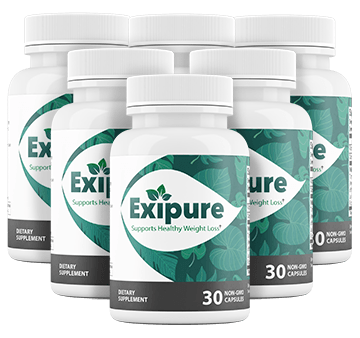MDs Answer: Are Chemicals in Our Food Harmful?
It’s simple sufficient to toss canned items, frozen meals, and different packaged objects into your cart whenever you’re grocery purchasing. But a scan of the components listing would possibly go away you questioning: What precisely are you consuming?
That’s very true these days, when headlines about unfamiliar components, chemical substances linked to cancer, and microplastics really feel inescapable.
When we requested readers to share their greatest health questions for our Real Talk Rx collection, we discovered a lot of you needed to know the way involved try to be about chemical substances in your meals. So we posed this query to our panel of consultants.
We’ll get to their solutions in a minute. But first, let’s break down the three areas many people are most nervous about:
Experts In This Article
- Alexa Mieses Malchuk, MD, MPH, a board-certified household drugs doctor and District Medical Director at One Medical in North Carolina
- Samuel Mathis, MD, a board-certified household drugs physician and assistant professor of household drugs on the University of Texas Medical Branch
- Divesh Goel, MD, board-certified household drugs physician
Unfamiliar components
Many widespread components in meals, corresponding to ascorbic acid, nitrates, sulfides, sodium benzoate, and potassium sorbate, can learn like a international language. These components are usually meals preservatives, which permit meals to last more, in line with Food Insight. Sometimes they’re much less intimidating when translated into on a regular basis language: Ascorbic acid, as an illustration, is vitamin C.
Any components included in meals are regulated: The FDA contains about 700 meals components on the widely acknowledged as secure (GRAS) listing, in line with the U.S. National Library of Medicine (NLM).
The quantity of an ingredient issues, too. Some chemical substances could also be harmful at excessive ranges, which is why they’re solely permitted at “one-hundredth of the amount that is considered harmful,” per the NLM.
A scary warning from California on packaging
Another potential reason for fear: On some packaging, you may even see ominous language alongside the traces of: “This product contains a chemical known to the State of California to cause cancer.”
That warning is required as a part of California’s Proposition 65, which was permitted in 1986. Under this legislation, California has created an inventory of 900+ chemical substances identified to trigger cancer or reproductive toxicity (assume: BPA, a chemical generally used in meals packaging), and requires companies to share warnings about them, in line with the California Office of Environmental Health Hazard Assessment (OEHHA).
Worth noting: “Not every chemical on the list has been proven to the worldwide scientific community to actually cause cancer in people,” in line with the American Cancer Society.
Plus, on the subject of hurt, the quantity of an ingredient issues, similar to with the meals components above. While the Prop 65 listing of components takes this under consideration by setting secure ranges for chemical substances, these “levels are frequently around 1,000 times lower than levels set by regulatory agencies such as the FDA, EPA and World Health Organization,” in line with Food Insight.
News about microplastics
You received’t see microplastics — aka teeny-tiny items of plastic — listed as an ingredient in your meals, however you are possible consuming them.
That’s as a result of microplastics are discovered in water, fish and shellfish, salts and sugars, processed meals, and vegetation, in line with a July 2022 assessment in the International Journal of Food Contamination. It’s attainable these tiny bits of plastic hurt our health, together with doubtlessly messing along with your weight, however we’d like extra analysis to know for certain.
So, are chemical substances in meals dangerous? How nervous ought to we be?

“It depends on what kind of foods you’re eating. In general, I recommend patients follow three rules for healthy eating [popularized by journalist and author Michael Pollan]:
Rule 1 is to eat real food. Eat food your grandparents would have said is food. If you’re eating the stuff humans have been eating for thousands of years, you don’t have to worry about microplastics or other chemicals in your food because you’re eating the actual food and not a processed form of it.
Rule 2 is not eating too much. And rule 3 is eat mostly plants. I’m not saying don’t eat meat, but most of our diet should be plant-based.
There is a list of foods known as the ‘dirty dozen’ in integrative medicine. These are foods that probably should be bought organic because of their tendency to absorb and hold on to pesticides and other chemicals. The dirty dozen include foods like strawberries, dark leafy greens, peaches, apples, and blueberries.
If you notice, most of these are plants that have a very thin skin, or that we eat with the skin on. I’m more concerned about these foods than I am about something like a banana or an avocado—because of the thick outer skin, it’s unlikely they would be as affected by pesticides.”
“What I tell my patients is to eat things that are closer to Earth. An apple you pick is closer to the source than the applesauce you buy in the grocery store.” —Divesh Goel, MD

“Unfortunately, when food is mass-produced in the United States, it isn’t always produced to the highest standards.
Often pesticides and things that in some ways keep the food safe to eat can actually introduce new harmful chemicals into your body. We also hear a lot about E. Coli outbreaks and salmonella outbreaks. A lot of that also has to do with how food is produced in the United States.
In general, if a person can afford it, it’s always best to eat whole foods (things that aren’t as processed), eat organic, or try to find animal products that were perhaps produced in a more humane way—that can actually translate to health benefits.”

“Everybody should be cognizant of what’s in their foods, if they have the capacity to be aware. But some people are worried about survival. Only if you’re higher on Maslow’s Pyramid, with your essential needs met, do you have the capacity to look at what’s in food.
Some level of awareness is important. But unfortunately, unless you move to a different country, or you have, say, a hobby farm, or you have the money, time, and resources to get truly organic foods, it’s probably futile to be overly cognizant because everything has chemicals in it and all of us are going to be exposed.
What I tell my patients is to eat things that are closer to Earth. An apple you pick is closer to the source than the applesauce you buy in the grocery store. You don’t have to memorize anything, you don’t need to know what’s in everything. But the closer it is to the source, probably the better it is going to be for you.”
The takeaway
Eating complete meals—corresponding to vegatables and fruits—greater than processed meals may be one option to restrict your consumption of doubtless dangerous chemical substances.
But after all, even core constructing blocks of meals—like rice and pasta, or canned objects like tomatoes and beans—have been processed in a way, so it is practically unimaginable to fully keep away from chemical substances in meals.
Keep in thoughts, although, that you just’re usually taking in quantities of those components effectively under the degrees at which they might develop into hazardous to your health.
If you’ve got considerations about particular meals you eat and the way they could have an effect on your health, contemplate reaching out to your physician or a registered dietitian for extra recommendation.
Confused about your health? Get solutions to extra widespread questions in our Real Talk Rx collection.
Well+Good articles reference scientific, dependable, latest, strong research to again up the knowledge we share. You can belief us alongside your wellness journey.
- Udovicki, B., Andjelkovic, M., Cirkovic-Velickovic, T. et al. Microplastics in meals: scoping assessment on health results, incidence, and human publicity. FoodContamination 9, 7 (2022). https://doi.org/10.1186/s40550-022-00093-6






